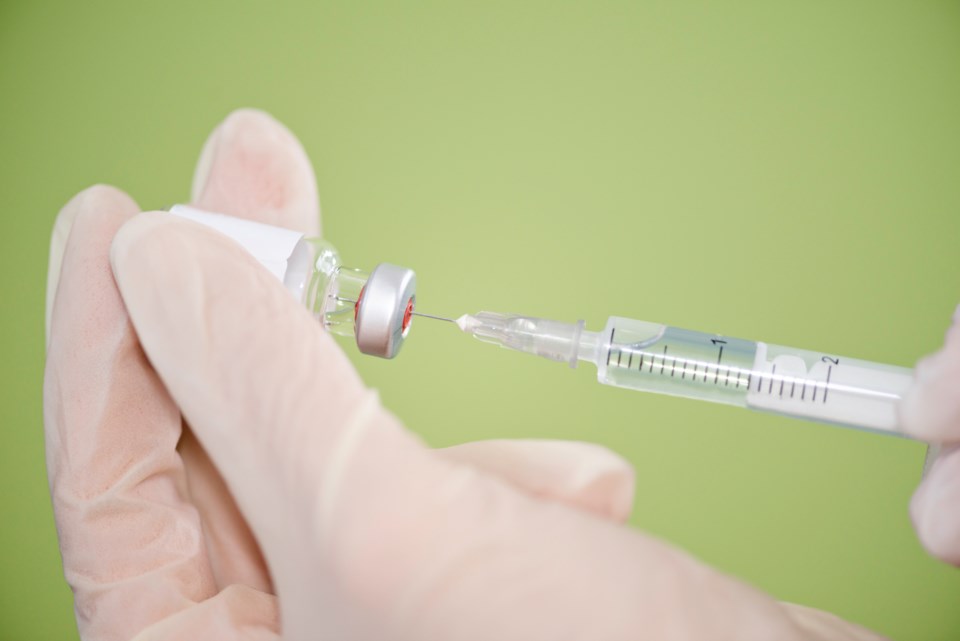Health experts don’t know exactly what it will look like having two viruses – the flu and COVID-19 – circulating at the same time this fall, but it could be “dangerous.”
That’s why getting a flu shot this fall is “more important than ever,” according to Dr. Ran Goldman, a professor at UBC’s faculty of medicine and pediatrician at BC Children’s Hospital.
“When you have another virus circulating like COVID-19, the risks that people will have to take on themselves not being immunized are going to be larger,” he said.
“I think by immunizing against influenza we’re at least reducing and mitigating some of the concerns... Also, the symptoms are going to be quite similar – it’s going to be really hard to differentiate between the two, and with that, it’s going to be a public health concern.”
Once someone has a viral infection, their immune system is reduced to a point where they can catch other infections, said Goldman, so, someone with the flu could catch COVID-19 – and vice versa – or catch both viruses at the same time, based on early reports from China.
Furthermore, a viral infection could also expose the immune system to a bacterial infection, putting people at an even higher risk of complications, including pneumonia or blood infections.
“So having any of those viruses, not to mention both, does expose you to more immune-related conditions and complications, including death,” said Goldman.
“That’s the danger we’re facing. And if we do have a way to mitigate one of them, such as influenza…we should try, please, to do that.”
People who are already immunocompromised, such as those with chronic illnesses or older individuals, would also be at higher risk being exposed to more than one virus.
Testing will also need to increase to a point where the province can respond to any local epidemics, said Goldman.
Earlier this week, Vancouver Coastal Health announced it was expanding hours at test sites in Richmond and Vancouver, where it also opened a new assessment centre. The province is also working on increasing its capacity and is hiring 500 more contact tracers ahead of the fall.
In a recent study, surveying nearly 3,000 families across six countries, Goldman found that more parents – 54 per cent – plan to vaccinate their children against the flu this year. That’s an increase of 16 per cent from last year. But, he said, it's important to reach the other half of parents still on the fence about vaccinating against the flu.
Immunizing is especially important as children return to in-class instruction this fall, as there could be greater spread of both influenza and COVID-19, said Goldman.
“So if we immunize children against it (the flu), we may reduce the risk for themselves, but also for their parents and grandparents and the community.”
Goldman also said that the public health measures in place against COVID-19 – including school cohorts, hand-washing, social distancing and staying home if you have any symptoms – may reduce the risk, “but not eliminate it.”
“By that, I mean there’s still going to be epidemics locally of both influenza – and likely of COVID-19 – just like every year.”
Goldman said he believes B.C. was “very fortunate” to flatten its curve earlier this year, but people will still need to follow health measures heading into the fall and upcoming flu season to ensure the curve remains as flat as possible and hospitals aren’t overloaded.
The flu vaccine is typically available around October, coinciding with the start of the influenza season which runs until March, although that can vary depending on weather, how active people are, and where epidemics start, said Goldman.
And while he said it will be “interesting” to see how the flu season unfolds this year – with some speculating that it may not be as bad given social distancing and increased hand washing, for example – Goldman said he wants to make sure people are protected.
“It’s hard to know when it’s going to hit the most, but we need to be ready the minute it comes at our doors.”



